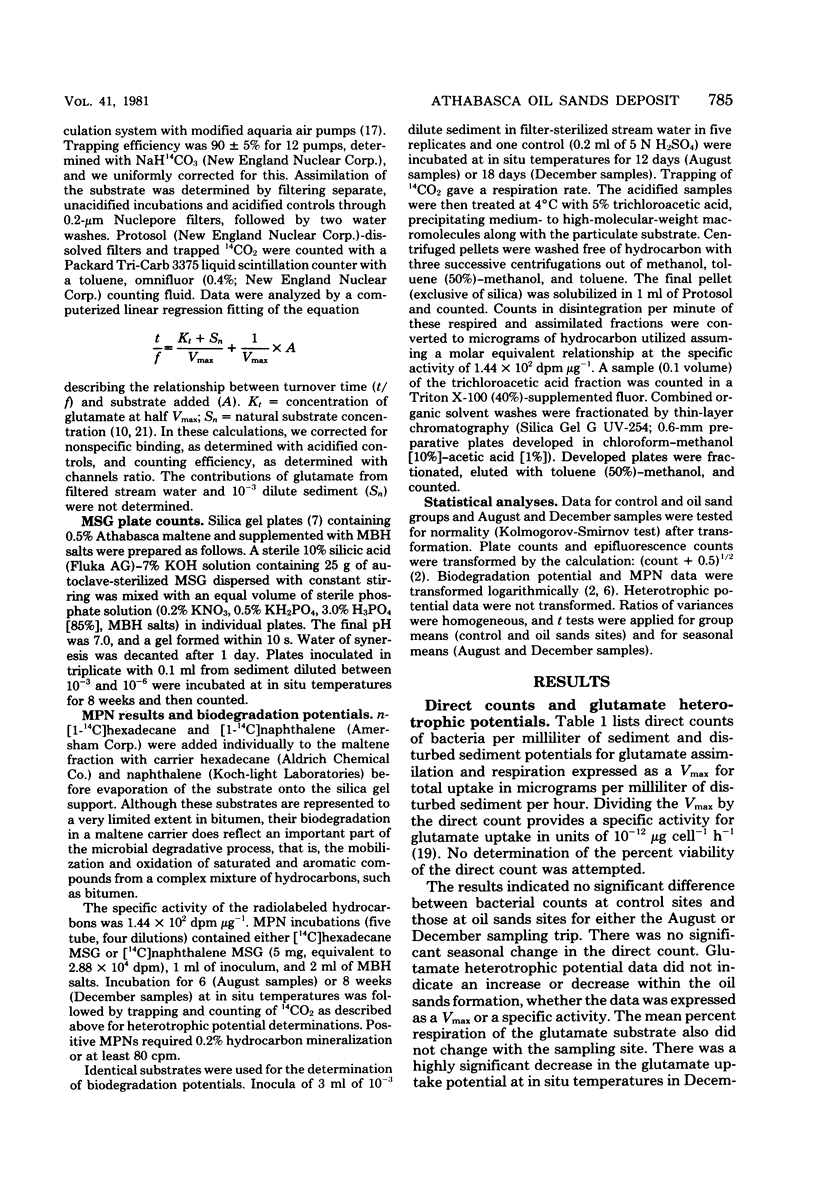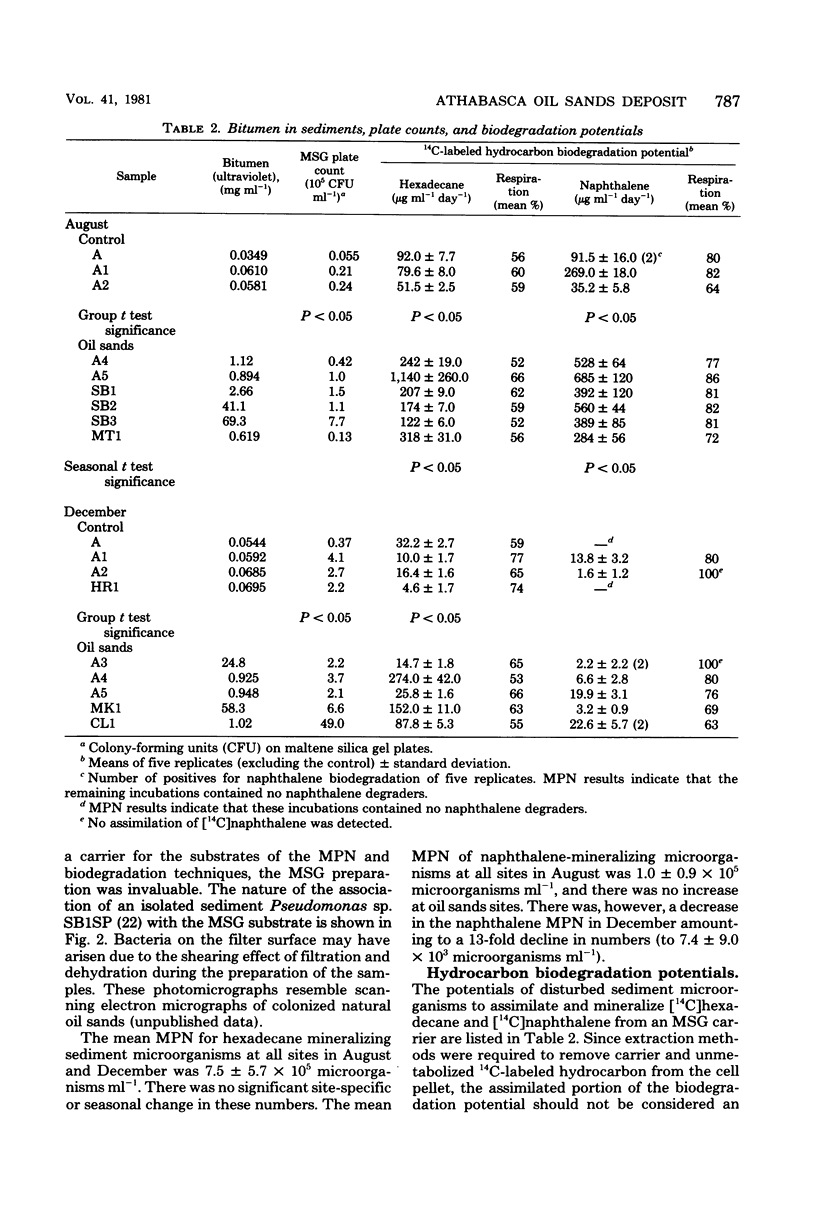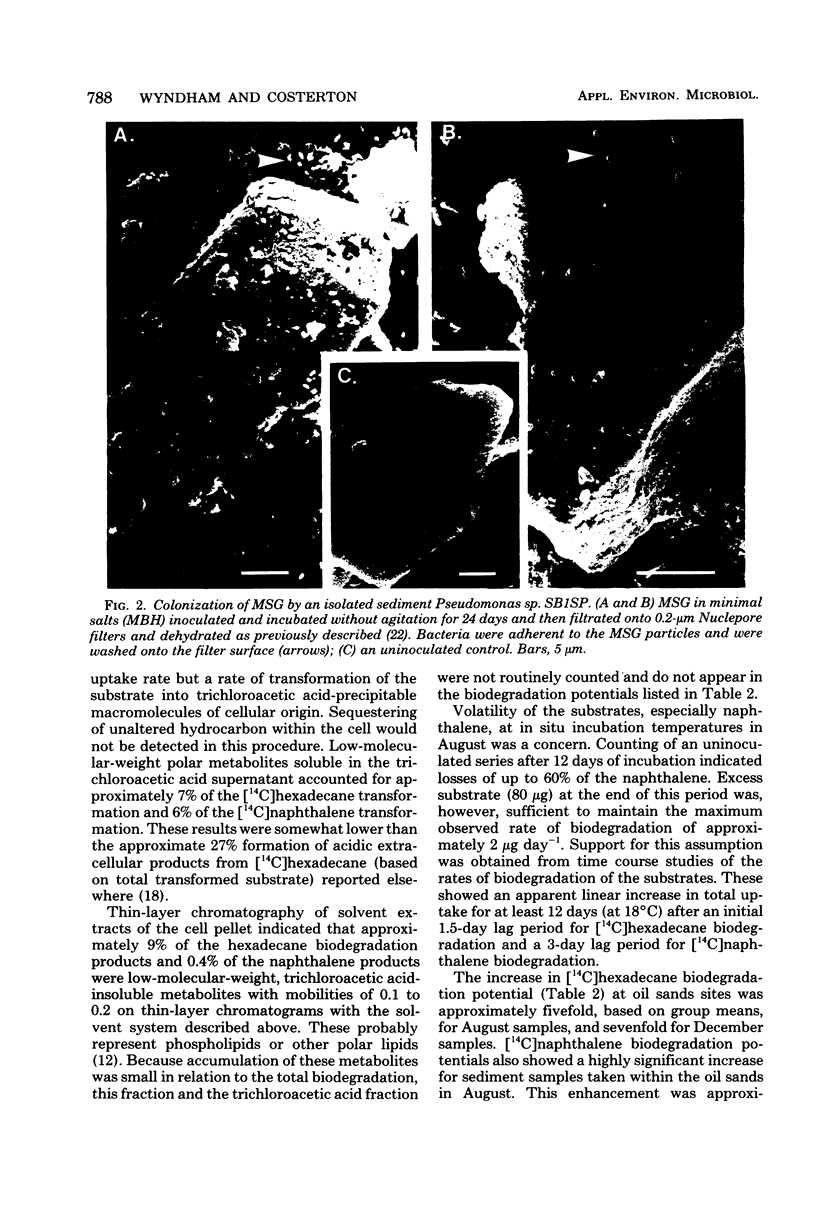Abstract
Techniques for the enumeration and the determination of the potential activity of disturbed sediment mixed populations at control sites and sites within the Athabasca oil sands formation were applied to August and December samples. These techniques included the determination of general heterotrophic potential for the assimilation and respiration of glutamate, which indicated no oil sand-related changes in the sediments but which indicated a significant seasonal change. Enumeration by epifluorescence direct counts, oil sand hydrocarbon plate counts, and most-probable-number determinations of [14C]hexadecane and [14C]-naphthalene degraders indicated that only the plate count was sensitive to increased numbers of oil sand-related hydrocarbon-oxidizing microorganisms within the oil sands deposit. Unlike the most probable number determinations of [14C]hexadecane and [14C]naphthalene degraders, however, the biodegradation potential results of these substrates indicated a significant increase in activity at oil sands sites. These biodegradation potentials also showed a marked seasonal fluctuation. Although the biodegradation potentials and the endogenous hydrocarbon plate counts indicated an oil sand-adapted mixed sediment population, the results of these techniques did not correlate well with the concentrations of bituminous hydrocarbons in the sediments. The results suggest that a general capability for hydrocarbon oxidation exists in the Athabasca River system and that this capability is enhanced within the natural bounds of the Athabasca oil sands.
Full text
PDF







Images in this article
Selected References
These references are in PubMed. This may not be the complete list of references from this article.
- Bushnell L. D., Haas H. F. The Utilization of Certain Hydrocarbons by Microorganisms. J Bacteriol. 1941 May;41(5):653–673. doi: 10.1128/jb.41.5.653-673.1941. [DOI] [PMC free article] [PubMed] [Google Scholar]
- COCHRAN W. G. Estimation of bacterial densities by means of the "most probable number". Biometrics. 1950 Jun;6(2):105–116. [PubMed] [Google Scholar]
- FUNK H. B., KRULWICH T. A. PREPARATION OF CLEAR SILICA GELS THAT CAN BE STREAKED. J Bacteriol. 1964 Oct;88:1200–1201. doi: 10.1128/jb.88.4.1200-1201.1964. [DOI] [PMC free article] [PubMed] [Google Scholar]
- Geesey G. G., Costerton J. W. Microbiology of a northern river: bacterial distribution and relationship to suspended sediment and organic carbon. Can J Microbiol. 1979 Sep;25(9):1058–1062. doi: 10.1139/m79-162. [DOI] [PubMed] [Google Scholar]
- Makula R. A., Lockwood P. J., Finnerty W. R. Comparative analysis of the lipids of Acinetobacter species grown on hexadecane. J Bacteriol. 1975 Jan;121(1):250–258. doi: 10.1128/jb.121.1.250-258.1975. [DOI] [PMC free article] [PubMed] [Google Scholar]
- Mossop G. D. Geology of the athabasca oil sands. Science. 1980 Jan 11;207(4427):145–152. doi: 10.1126/science.207.4427.145. [DOI] [PubMed] [Google Scholar]
- Walker J. D., Colwell R. R. Measuring the potential activity of hydrocarbon-degrading bacteria. Appl Environ Microbiol. 1976 Feb;31(2):189–197. doi: 10.1128/aem.31.2.189-197.1976. [DOI] [PMC free article] [PubMed] [Google Scholar]
- Wright R. T. Measurement and significance of specific activity in the heterotrophic bacteria of natural waters. Appl Environ Microbiol. 1978 Aug;36(2):297–305. doi: 10.1128/aem.36.2.297-305.1978. [DOI] [PMC free article] [PubMed] [Google Scholar]
- Wyndham R. C., Costerton J. W. In vitro microbial degradation of bituminous hydrocarbons and in situ colonization of bitumen surfaces within the athabasca oil sands deposit. Appl Environ Microbiol. 1981 Mar;41(3):791–800. doi: 10.1128/aem.41.3.791-800.1981. [DOI] [PMC free article] [PubMed] [Google Scholar]



